Wednesday, April 3, 2013
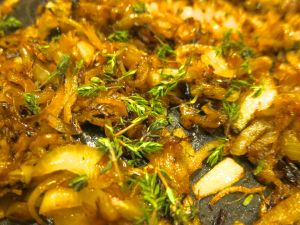 I add onions to just about everything I make. Sautéed white or yellow garden-variety onions (Allium cepa) are the starting point to virtually every soup and scallions or red onions top each salad. The garlicky taste of shallots appear in dishes like mussels or risotto, and leeks are fun when you want to change things up. Like spices, the various varieties of allium vegetables will add complexity and flavor to any dish. Not to mention a host of nutritional benefits that vary by subspecies and generally include vitamins C, B6, folate and fiber; minerals molybdenum and manganese; powerful polyphenol antioxidants like quercetin; and sulfur-containing compounds that are responsible for the pungent scent and tears that onions can produce. (More here on the mechanism for science nerds.) No doubt all of these components work together—and quercetin is particularly high in the outer layers, by the way, so don’t over peel—to give onions their powerful effect on health, from strong bones and anti-inflammatory properties to a reduced risk of some cancers. And, with a wide variety from which to choose, it should be easy to find an onion that works for your palate and cooking style.
I add onions to just about everything I make. Sautéed white or yellow garden-variety onions (Allium cepa) are the starting point to virtually every soup and scallions or red onions top each salad. The garlicky taste of shallots appear in dishes like mussels or risotto, and leeks are fun when you want to change things up. Like spices, the various varieties of allium vegetables will add complexity and flavor to any dish. Not to mention a host of nutritional benefits that vary by subspecies and generally include vitamins C, B6, folate and fiber; minerals molybdenum and manganese; powerful polyphenol antioxidants like quercetin; and sulfur-containing compounds that are responsible for the pungent scent and tears that onions can produce. (More here on the mechanism for science nerds.) No doubt all of these components work together—and quercetin is particularly high in the outer layers, by the way, so don’t over peel—to give onions their powerful effect on health, from strong bones and anti-inflammatory properties to a reduced risk of some cancers. And, with a wide variety from which to choose, it should be easy to find an onion that works for your palate and cooking style.
I dare say that caramelized onions will work for pretty much anyone, though. What begins as a pungent onion morphs over time into this sweet delight that has a wide range of culinary applications. The sky’s the limit, really, from elegant side dish sophisticated pizza topping (like, say, swiss chard and pesto or Brussels sprouts and ricotta). I often also throw them into an omelet with cheese and herbs for a light dinner. It’s truly the examplar extraordinaire when it comes to celebrating onion’s complexity, versatility, and flavor.
Nothing difficult about it, all you need is time and patience.
(And possibly goggles, for the onion-cutting process.)
Caramelized Onions
1. Cut a slew of onions into thin strips. Note: They shrink considerably during cooking so do make a bunch; they will keep in the fridge or can be frozen for another time. This batch included 2.5 onions; I should have made more (see photo 5).

2. Heat 2 tablespoons olive or canola oil over medium-high, add onions, and lightly season with salt and black pepper. (See? There was room in the pan. But I didn’t feel like cutting more.)

3. Sauté on medium-high heat 6-7 minutes or so to begin the cooking process, allowing the onions to become lightly browned and soft. Then cook down on low/medium-low heat approximately 40-60 minutes, stirring periodically to ensure even browning. (Add a little more oil if needed.)
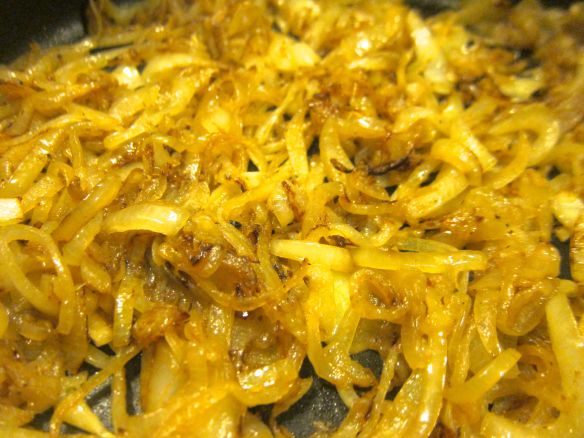
4. Deglaze the pan with white wine or sherry when almost finished cooking and mix in the tender leaves from several stems of fresh thyme. Continue cooking, taste, and reseason as needed.

Ta da! Onions are now caramelized. You can tell because a) they have a nice brown, caramel-ly color; b) only a small fraction of what you began with remains; and c) they taste sweet and sticky.
Cooking Notes
I really enjoy caramelizing onions and it’s super easy, but it’s not quick and you do need to toss them now and again to ensure even cooking. As well, onions can vary in their sugar content depending on the variety and when harvested. Occasionally the onions don’t brown like you are expecting, in which case go ahead and add a little honey or agave to move the process along. You really want to avoid this—the whole point is that the sugars develop during cooking—but sometimes it is necessary, I’ve found. As well, if you’ve never done this before you do need to find the sweet spot that works on your stove. Common recipes keep the onions on low the entire time, and that simply doesn’t work on my unit. For this reason, I jump start the browning by beginning at a higher heat to get things going and then turn the heat down to medium-low. If after 25 minutes not much is happening you’ll need to increase the heat. Finally, you can omit the deglazing piece if you don’t cook with alcohol; use a vegetable stock instead or just don’t do it, no big deal. That said, the combination of caramelized onions, fresh thyme, and sherry is divine.
And guess what? Caramelized onions freeze beautifully, so you can make a big batch and keep them on hand for whenever you need them.
All Hail Allium indeed.

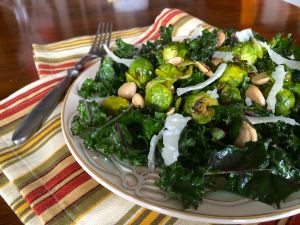
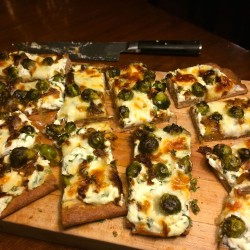
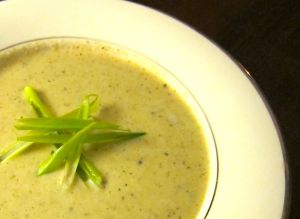

Mmmmmmmm onions